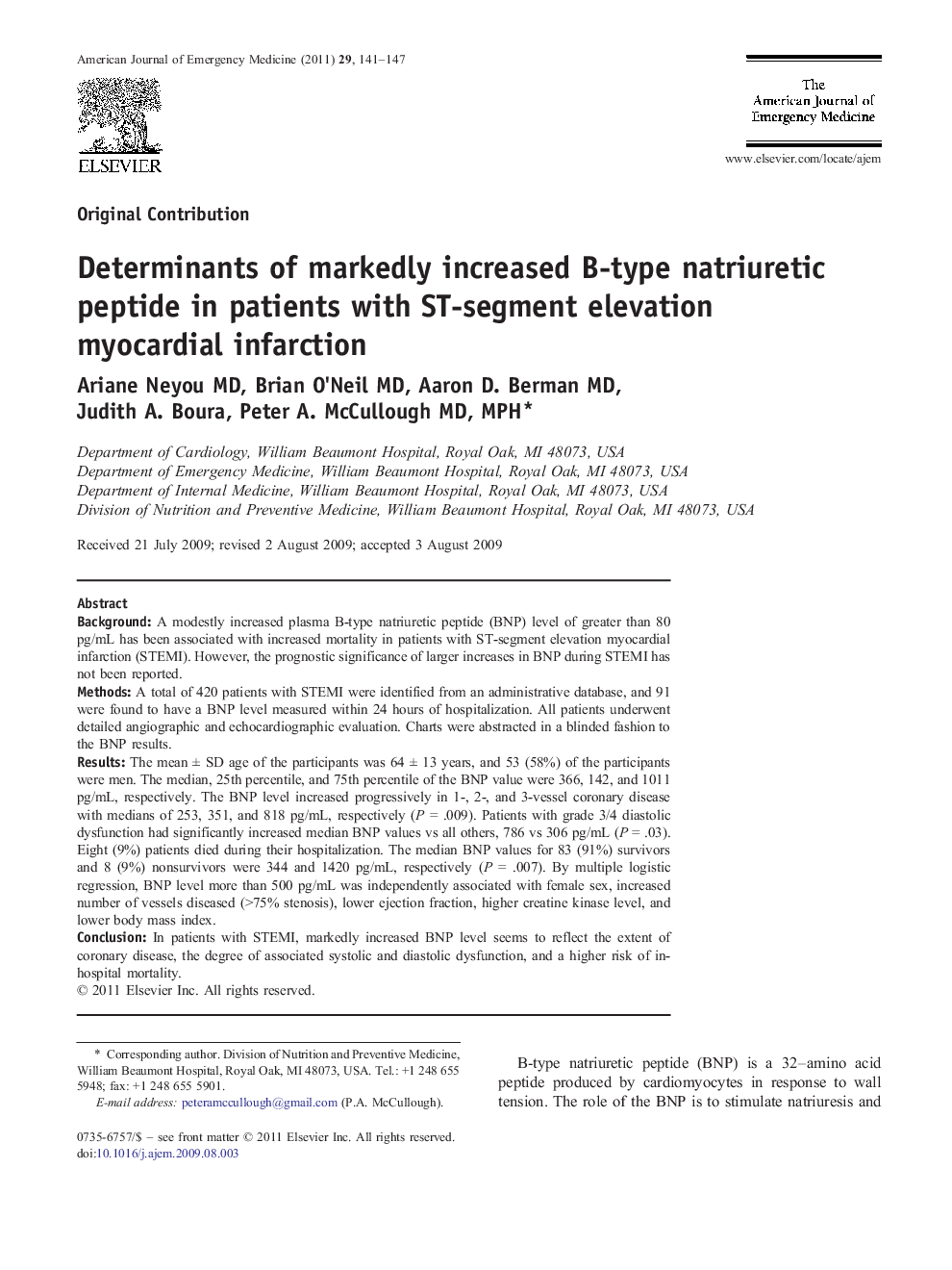| کد مقاله | کد نشریه | سال انتشار | مقاله انگلیسی | نسخه تمام متن |
|---|---|---|---|---|
| 3226321 | 1588151 | 2011 | 7 صفحه PDF | دانلود رایگان |

BackgroundA modestly increased plasma B-type natriuretic peptide (BNP) level of greater than 80 pg/mL has been associated with increased mortality in patients with ST-segment elevation myocardial infarction (STEMI). However, the prognostic significance of larger increases in BNP during STEMI has not been reported.MethodsA total of 420 patients with STEMI were identified from an administrative database, and 91 were found to have a BNP level measured within 24 hours of hospitalization. All patients underwent detailed angiographic and echocardiographic evaluation. Charts were abstracted in a blinded fashion to the BNP results.ResultsThe mean ± SD age of the participants was 64 ± 13 years, and 53 (58%) of the participants were men. The median, 25th percentile, and 75th percentile of the BNP value were 366, 142, and 1011 pg/mL, respectively. The BNP level increased progressively in 1-, 2-, and 3-vessel coronary disease with medians of 253, 351, and 818 pg/mL, respectively (P = .009). Patients with grade 3/4 diastolic dysfunction had significantly increased median BNP values vs all others, 786 vs 306 pg/mL (P = .03). Eight (9%) patients died during their hospitalization. The median BNP values for 83 (91%) survivors and 8 (9%) nonsurvivors were 344 and 1420 pg/mL, respectively (P = .007). By multiple logistic regression, BNP level more than 500 pg/mL was independently associated with female sex, increased number of vessels diseased (>75% stenosis), lower ejection fraction, higher creatine kinase level, and lower body mass index.ConclusionIn patients with STEMI, markedly increased BNP level seems to reflect the extent of coronary disease, the degree of associated systolic and diastolic dysfunction, and a higher risk of in-hospital mortality.
Journal: The American Journal of Emergency Medicine - Volume 29, Issue 2, February 2011, Pages 141–147